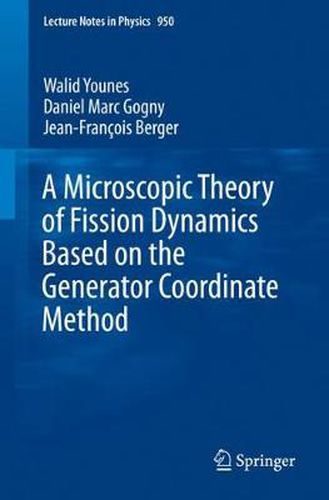Readings Newsletter
Become a Readings Member to make your shopping experience even easier.
Sign in or sign up for free!
You’re not far away from qualifying for FREE standard shipping within Australia
You’ve qualified for FREE standard shipping within Australia
The cart is loading…






This book introduces a quantum-mechanical description of the nuclear fission process from an initial compound state to scission. Issues like the relevant degrees of freedom throughout the process, the way of coupling collective and intrinsic degrees during the fission process, and how a nucleus divides into two separate daughters in a quantum-mechanical description where its wave function can be non-local, are currently being investigated through a variety of theoretical, computational, and experimental techniques.
The term microscopic in this context refers to an approach that starts from protons, neutrons, and an effective (i.e., in-medium) interaction between them. The form of this interaction is inspired by more fundamental theories of nuclear matter, but still contains parameters that have to be adjusted to data. Thus, this microscopic approach is far from complete, but sufficient progress has been made to warrant taking stock of what has been accomplished so far.
The aim is to provide, in a pedagogical and comprehensive manner, one specific approach to the fission problem, originally developed at the CEA Bruyeres-le-Chatel Laboratory in France. Intended as a reference for advanced graduate students and researchers in fission theory as well as for practitioners in the field, it includes illustrative examples throughout the text to make it easier for the reader to understand, implement, and verify the formalism presented.
$9.00 standard shipping within Australia
FREE standard shipping within Australia for orders over $100.00
Express & International shipping calculated at checkout
This book introduces a quantum-mechanical description of the nuclear fission process from an initial compound state to scission. Issues like the relevant degrees of freedom throughout the process, the way of coupling collective and intrinsic degrees during the fission process, and how a nucleus divides into two separate daughters in a quantum-mechanical description where its wave function can be non-local, are currently being investigated through a variety of theoretical, computational, and experimental techniques.
The term microscopic in this context refers to an approach that starts from protons, neutrons, and an effective (i.e., in-medium) interaction between them. The form of this interaction is inspired by more fundamental theories of nuclear matter, but still contains parameters that have to be adjusted to data. Thus, this microscopic approach is far from complete, but sufficient progress has been made to warrant taking stock of what has been accomplished so far.
The aim is to provide, in a pedagogical and comprehensive manner, one specific approach to the fission problem, originally developed at the CEA Bruyeres-le-Chatel Laboratory in France. Intended as a reference for advanced graduate students and researchers in fission theory as well as for practitioners in the field, it includes illustrative examples throughout the text to make it easier for the reader to understand, implement, and verify the formalism presented.